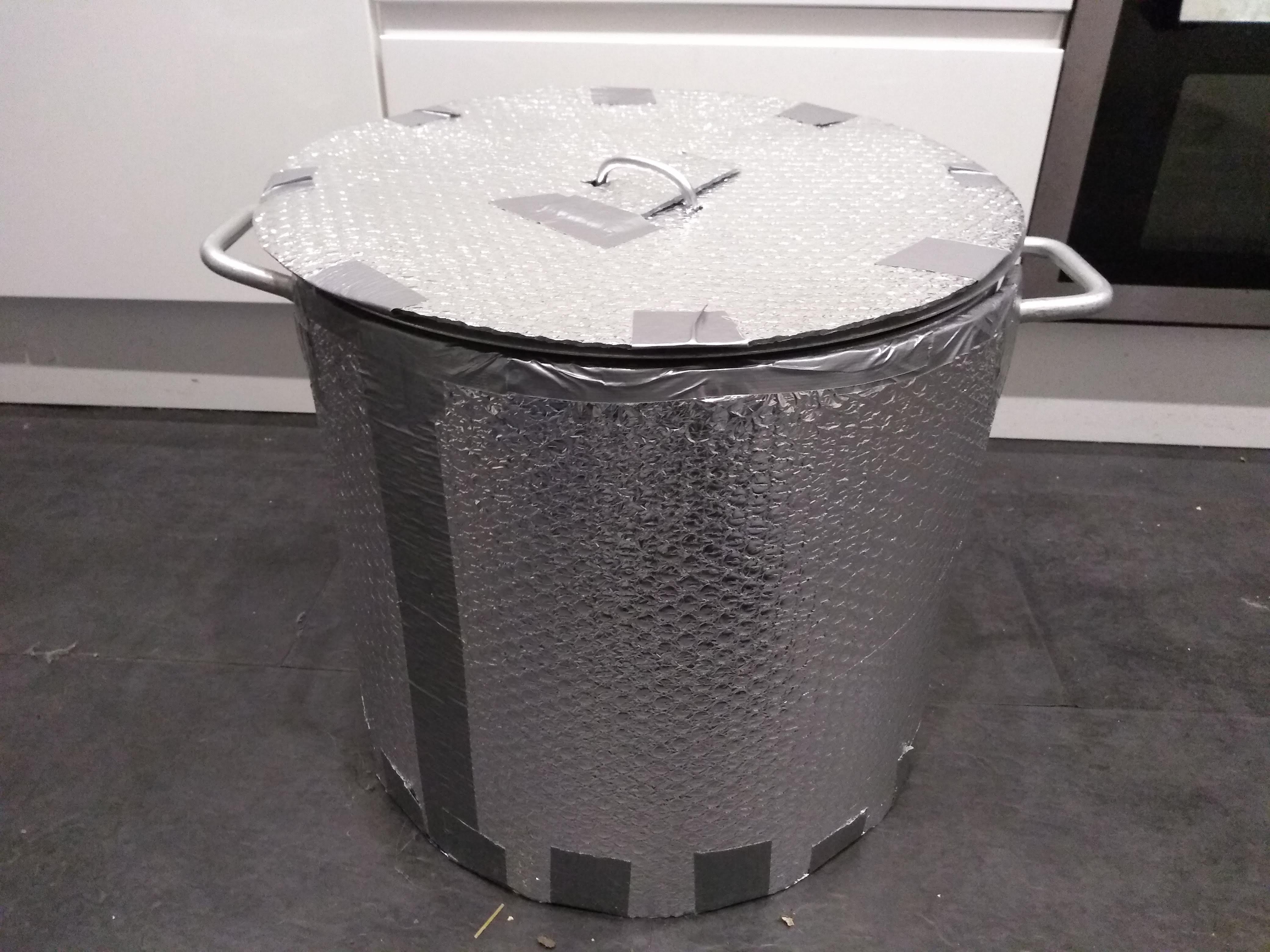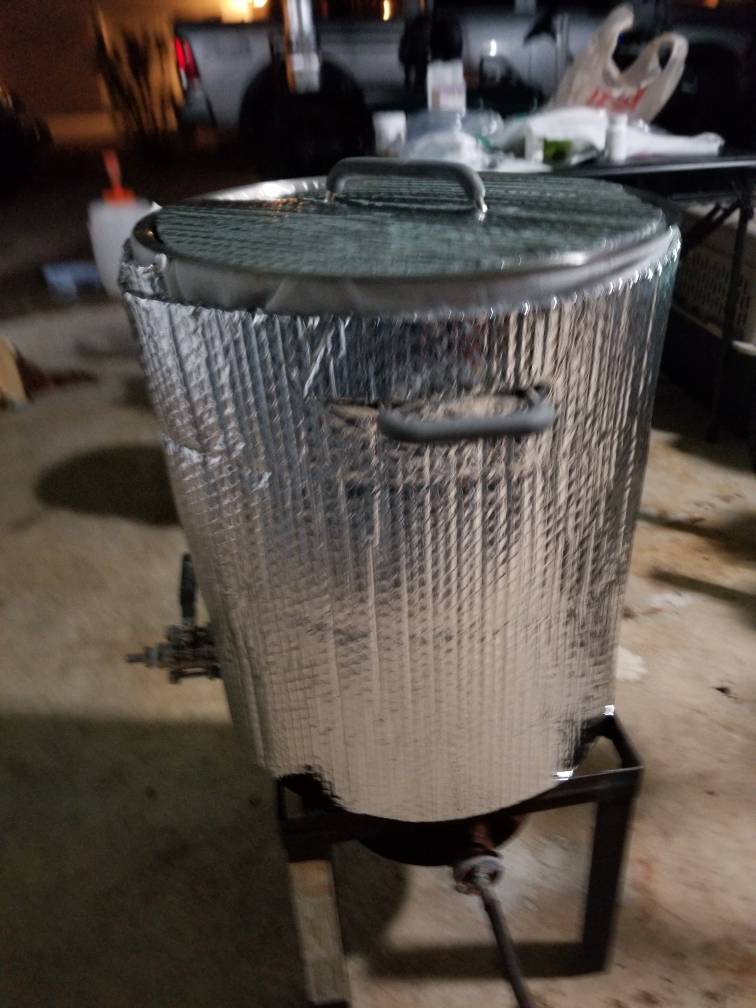Allekornbrauer
Well-Known Member
- Joined
- Dec 11, 2016
- Messages
- 95
- Reaction score
- 1
Hello what is the best way to insulate your mash-tun for doing BIAB Brewing ?

I've heard of people using sleeping bags and blankets. I also saw a video where the guy popped his vessel in a big electric smoker to keep it at temp. I throw a couple beach towels in the clothes dryer for 5 minutes and then wrap the vessel with the towels. On a colder day (50s, I'm in CA) it holds temp for 60 minutes; sometimes it will drop off a degree or two in the last 15 minutes. I suppose it depends on whether you are brewing indoors or out, and what region you live in. My method probably wouldn't work well for garage brewing in North Dakota.Hello what is the best way to insulate your mash-tun for doing BIAB Brewing ?
My method probably wouldn't work well for garage brewing in North Dakota.











![Craft A Brew - Safale S-04 Dry Yeast - Fermentis - English Ale Dry Yeast - For English and American Ales and Hard Apple Ciders - Ingredients for Home Brewing - Beer Making Supplies - [1 Pack]](https://m.media-amazon.com/images/I/41fVGNh6JfL._SL500_.jpg)













I do BIAB in South Florida. The temp will drop quite a bit on my uninsulated thin walled Bayou Classic kettle.
Conchs are reserved for fritters and chowder. I imagine the local seaweed would make a great insulator.Insulate by stacking up mounds of conch shells around it?


Mine is similar, and I've found that by insulating all the way to the ground, the dead space under the burner has less impact on cooling the bottom of the mash.I made this out of reflectix. Seems to work pretty good.View attachment 607711